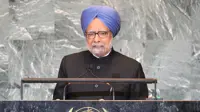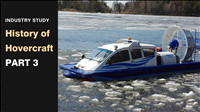Marketing must move to a digitally focused business system…
15 Oct 2007
A recent cross-industry study entitled Marketing & Media Ecosystem 2010, says marketing organisations, agencies and media companies are finding it necessary to change at an unprecedented pace. The study details how marketers and their agencies must change in the face of convergence of media and technology, which is happening simultaneously with the fragmentation and personalisation of media, and is changing the connection between marketers and end users.
The Association of National Advertisers (ANA) say that the study marks a first cross-industry partnership of its kind, being a joint study between the ANA, IAB (Interactive Advertising Bureau), AAAA (American Association of Advertising Agencies), and management consulting firm Booz Allen Hamilton.
Marketing & Media Ecosystem 2010, which goes by the acronym MME2010, identifies priorities, capabilities and partnerships needed across the marketer-agency-media value chain to optimise in the present, and prepare for the future.
Says Bob Liodice, president and CEO of the ANA, the agency which issued the findings of the report to the press, "The impact of new media is changing the way marketers interact, target and distribute their marketing message."
Adds Andrea Rasmussen, principal at Booz Allen, "As the marketplace shifts to a digital interactive environment, marketing organisations, agencies, and media companies need to transform existing marketing agendas and capabilities to succeed. Now, consumers not only talk back to marketers and interact with marketing messages, but they also reshape and distribute those messages through global communities. The mix of media channels has shifted from a one-way broadcast model to a set of dynamic two-way media forums."
Though marketing fundamentals have not changed, the strategies, investments and capabilities required to succeed in marketing witnessed a shift.
The study covered over 250 marketers through a combination of either surveys or interviews, and in some instances, both. These participants identified the ways in which the complex media environment is reshaping the marketing ecosystem, and spotlighted the priorities, capabilities and partnerships that will be increasingly required across the marketer-agency-media value chain.
Though most senior marketing executives recognise the importance of creating a digitally focused culture, less than a quarter agree that their organisations are currently digitally savvy.
Furthermore, over 90 per cent of respondents indicated they planned to increase marketing spend in the digital arena, despite many identifying significant barriers including insufficient metrics (62 per cent), lack of organisation support (51 per cent), or the lack of experience in the new media (59 per cent).
The themes emerging from the MME2010 study include:
- Marketing as conversation: Marketing is becoming a two-way channel, lesser about sending a message to consumers, and increasingly about conversing and co-creating experiences with them. Marketers are depending on a new media-mix to further the communication of their messages. According to the press release, about half the marketers are planning to increase their PR spends as a part of marketing.
- Translating insight into foresight: With technology enhancing consumer insight, and analytics driven targeting capabilities, there is an amplified ability for perspective and accuracy, with eighty per cent of marketers placing a high importance on behavioural targeting.
- Media as the new "creative": Distribution mechanisms and context have come to rival creative execution in the order of importance. Marketers have invested in capabilities to bridge the gap between media, creative and brand strategy chain (e.g., communications planning and "integrator" positions). Once again, over 80 per cent of participants agree that going forward communications planning capabilities will be critical.
- Marketing + Math + Technology: Data quality, quantity and accessibility have made mathematics an integral part of marketing. Leaders increasingly rely on metrics and capabilities to judge the effects of new media.
- The ''network'' effect: The move to digital media necessitates a higher level of collaboration and coordination across all players in the ecosystem. Almost 60 per cent of participants of the study believed that creative, strategic, and media capabilities should be re-bundled.
However, there is no consensus as to which agency ''type'' should lead. Traditional creative partnerships are taking a back seat to media partnerships, with twice as many study-participants indicating that media company and media agency partnerships will become increasingly important than traditional full-service agency partnerships.
The MME2010 study also identified specific digital capabilities, investments and attitudes across leaders. Leaders disproportionately prioritise consumer insights, and are characterised by their almost universal belief (over 95 per cent) that strong consumer insight is critical and requires data transparency and partnerships. They lead in their deep understanding of how consumers leverage new media for community and entertainment, and they utilise progressive quantitative tools, imposing minimal organisational barriers and encouraging a strong digital culture.
According to the leaders, keys to success are:
- Make your consumer an advocate: Shift marketing focus from sending a message, to facilitating conversations with and between consumers. Understand user-generated content and how consumers use your brand. Vest your brand with meaning. Be authentic.
- Elevate media and communications: Develop an internal ''integrator'' position (e.g., communications planner). Appoint senior media leadership, incorporate media early in the strategic planning process, and integrate media with marketing.
- Expand consumer insights capabilities: Leverage one-to-one consumer interactions (including ethnography) and digital channels that provide real-time behaviours and patterns. Understand how consumers use media for entertainment, community and information. Lean on partners to provide additional data and insight. Embed them across the organisation.
- Apply rigor: refine and iterate your marketing mix: Build partnerships with digital agencies, media agencies and media companies to track ad placement, versioning and effectiveness. Digital media brings a new level of transparency and efficiency to the optimisation of the marketing mix.
- Bring digital out of the back room: Digital and interactive are no longer ''niche'' capabilities. They are part of the requisite skill set for all marketers. Recruit and train accordingly.
- Don''t stop at technology: Align the organisation, hire the right talent, and initiate a progressive culture. Identify and address organisational barriers.
- Learn globally: Develop structures to share best practices in new media. Watch technology patterns, social trends and consumer technology adoption rates in leading geographies.
- Institutionalise experimentation and media innovation: Encourage experimentation and support ideas for incremental improvement. Formalise experimental spend efforts. At the very least, have a default budget framework such as allocating ~5 per centinto experimental media.
- Establish an increasing number of marketer, media and technology partnerships. Staff accordingly. Place bets across the media and technology landscape.
- Manage complexity via partnerships: Know the difference between those capabilities to keep in-house and those better managed by external partners. Know when an idea is scaleable, or a competitive advantage, and should be resourced internally.
- Question marketing models: Identify clear brand objectives, evaluate multi-channel (e.g., relationships, event, in-store, email) marketing options to meet objectives, and develop business cases.
In 2008, quantitative studies will be fielded by the IAB and the AAAA and presented at industry meetings. An exhaustive report will be written based upon the results of the three phases of market research.
The Marketing Media & Ecosystem 2010 study is based on responses from over 250 marketers as well as in-depth interviews with over seventy-five leading marketers, agencies, and media company senior executives (CMO, CEO and VP). Participants represented 165 unique companies representing B2B, B2C, and mix businesses across sectors (media/publishing, auto/manufacturing, tech/telco, financial services/travel, consumer goods, healthcare/pharma and other).
Guideline,
Inc conducted the field study.






















